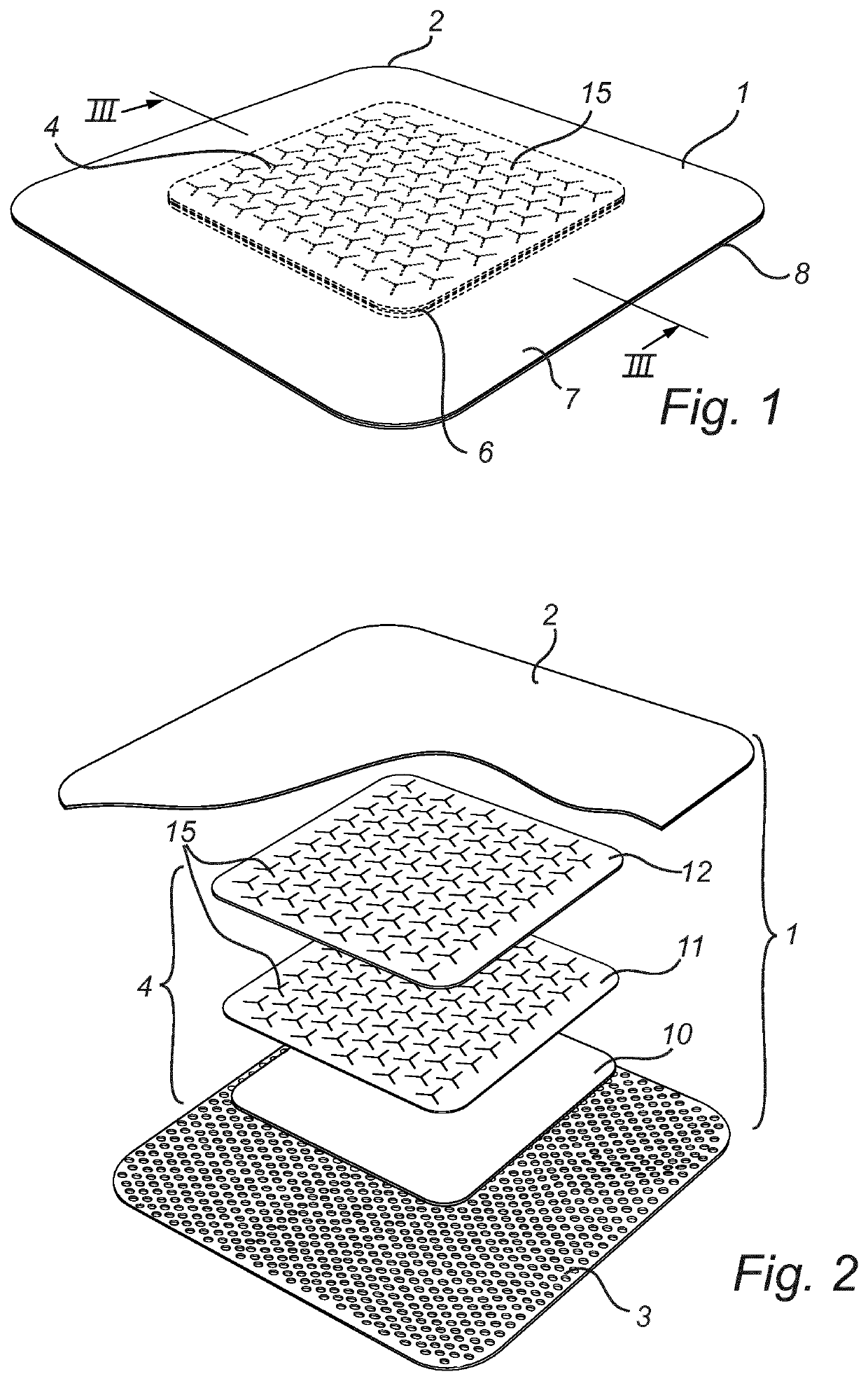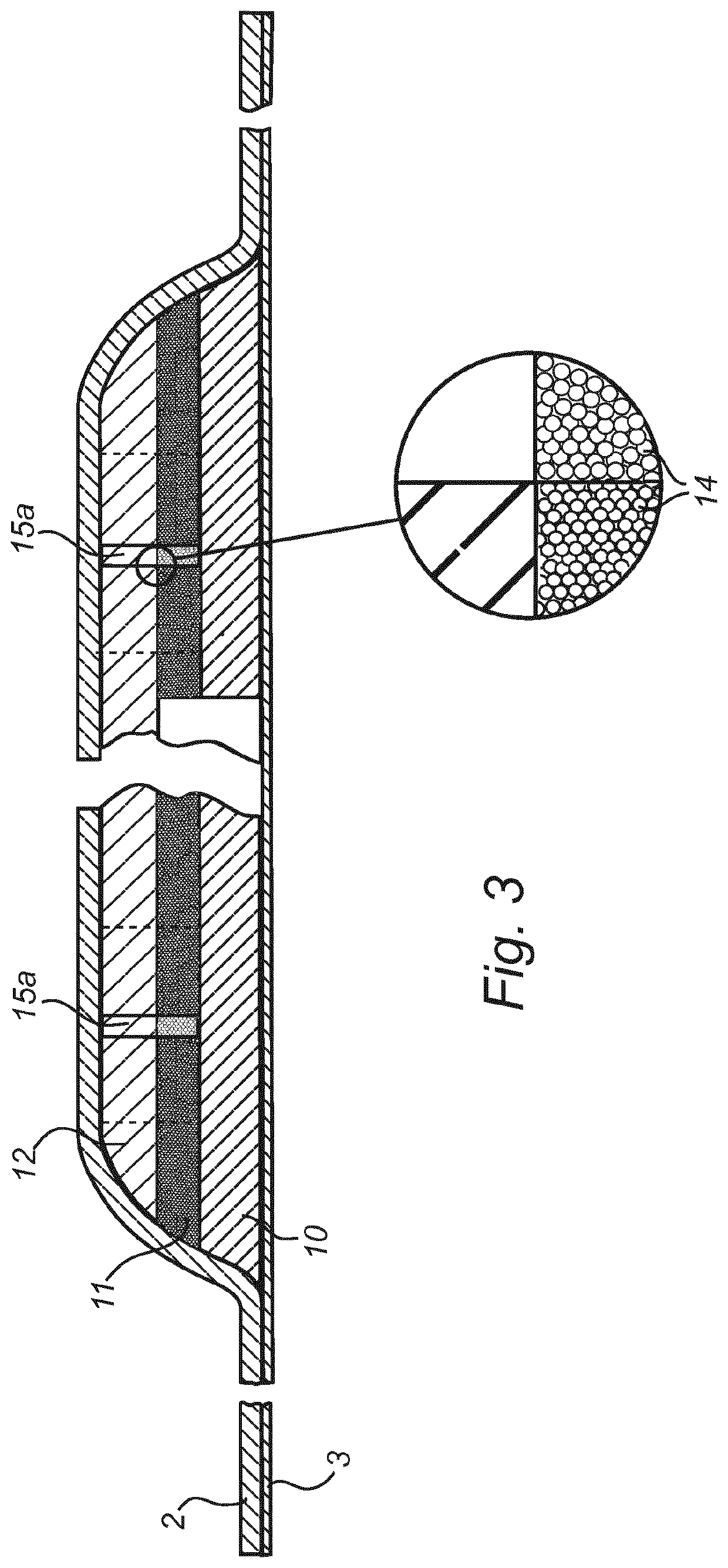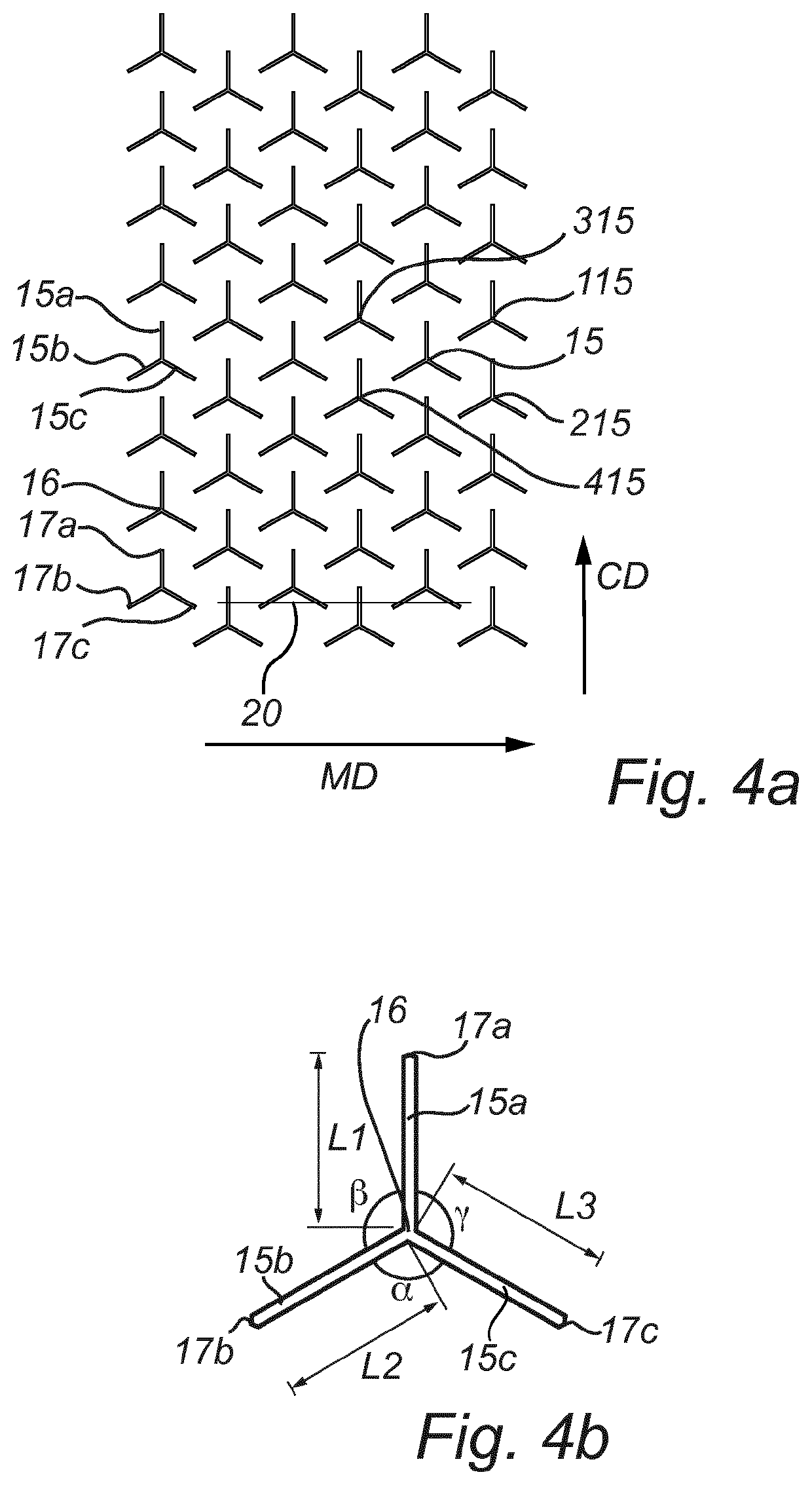Wound pad and a self-adhesive member comprising a wound pad
a self-adhesive member and wound care technology, applied in the field of wound care products, can solve the problems of lost product function, lost adhesive connection with the user's skin along the edges of the wound care product, and important wear time, and achieve the effect of less stress and easier conformation to the user's body
- Summary
- Abstract
- Description
- Claims
- Application Information
AI Technical Summary
Benefits of technology
Problems solved by technology
Method used
Image
Examples
Embodiment Construction
[0095]The present invention will now be described more fully hereinafter with reference to the accompanying drawings, in which exemplary embodiments of the invention are shown. The invention may, however, be embodied in many different forms and should not be construed as limited to the embodiments set forth herein; rather, these embodiments are provided for thoroughness and completeness, and fully convey the scope of the invention to the skilled addressee. Like reference characters refer to like elements throughout the description.
[0096]FIGS. 1 and 2 illustrate a first embodiment of the wound pad according to the present invention and in an exemplary square-shaped self-adhesive member 1 for adhering to and covering a portion of a user's skin, such as a self-adhesive wound care product. The self-adhesive member 1 is not limited to have a square shape, it may have any other suitable shape, such as round, oval etc.
[0097]The self-adhesive member 1 comprises a backing layer 2 and a wound...
PUM
 Login to View More
Login to View More Abstract
Description
Claims
Application Information
 Login to View More
Login to View More - R&D
- Intellectual Property
- Life Sciences
- Materials
- Tech Scout
- Unparalleled Data Quality
- Higher Quality Content
- 60% Fewer Hallucinations
Browse by: Latest US Patents, China's latest patents, Technical Efficacy Thesaurus, Application Domain, Technology Topic, Popular Technical Reports.
© 2025 PatSnap. All rights reserved.Legal|Privacy policy|Modern Slavery Act Transparency Statement|Sitemap|About US| Contact US: help@patsnap.com



